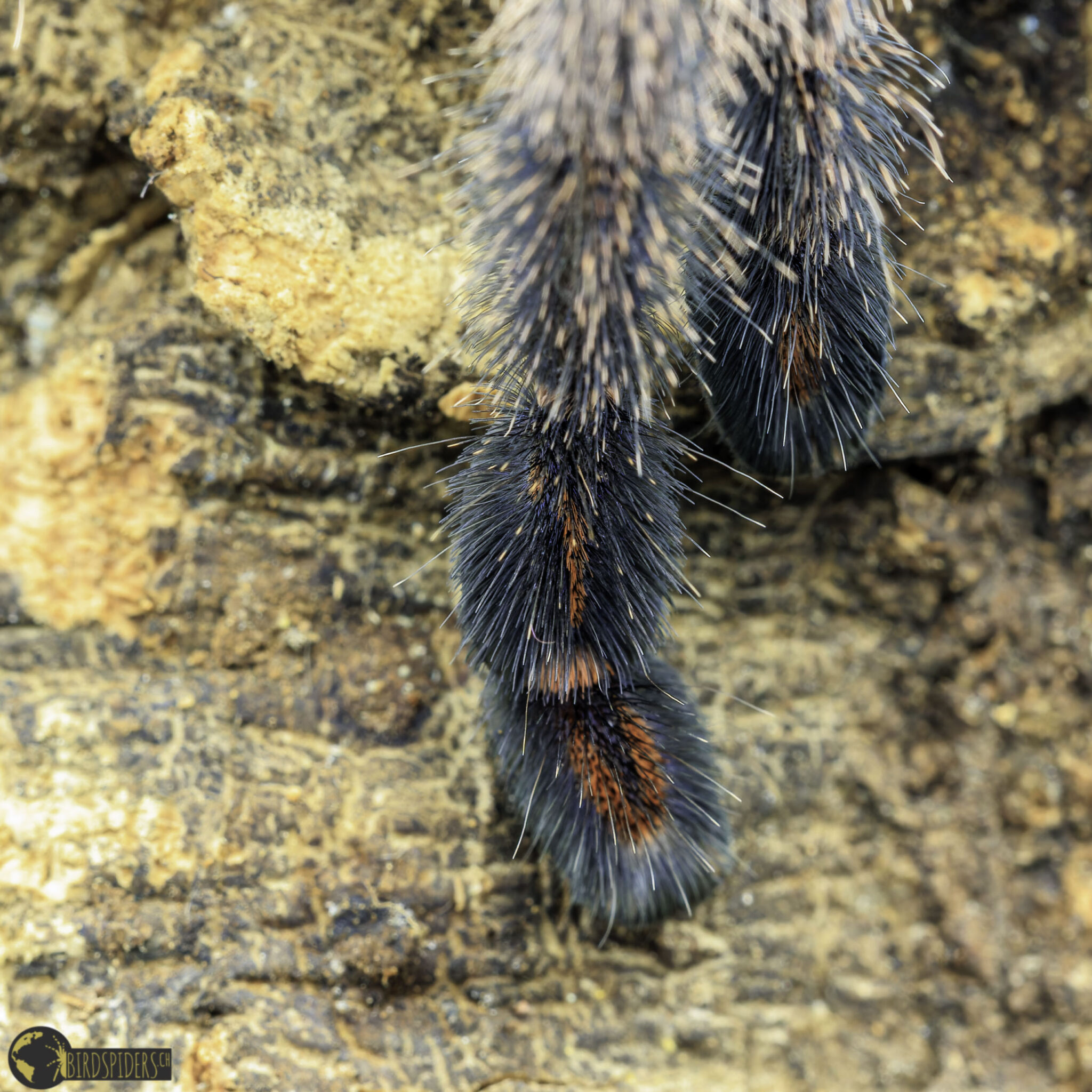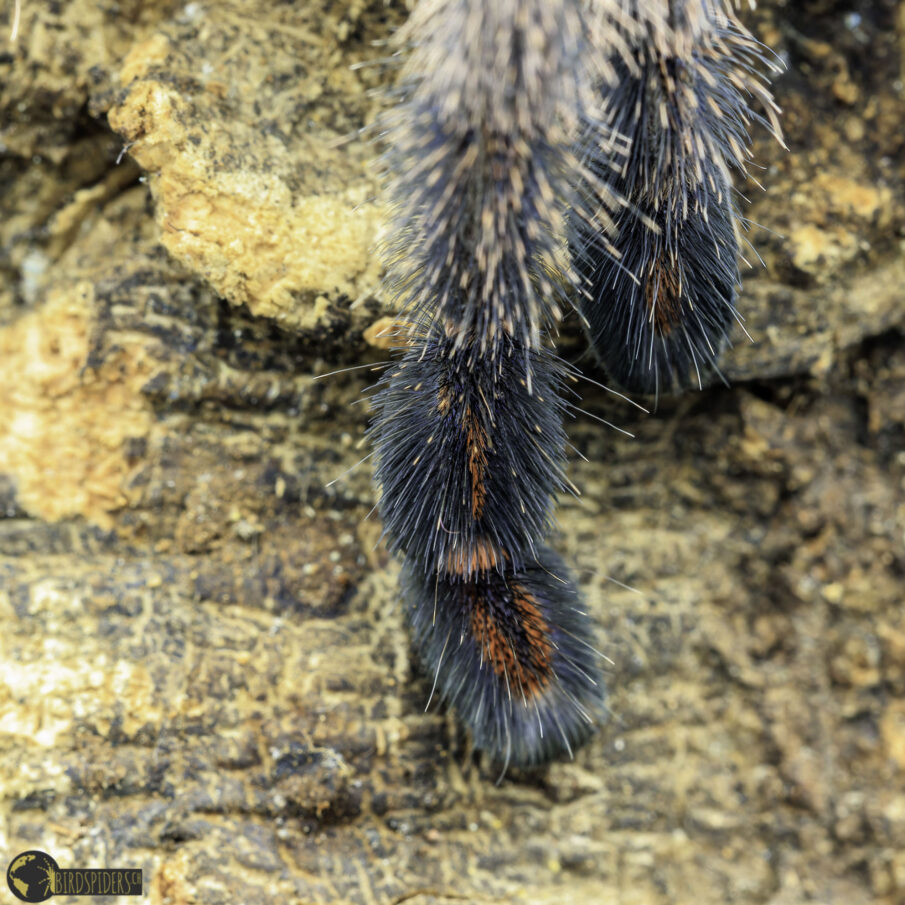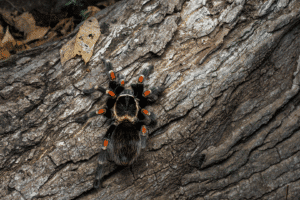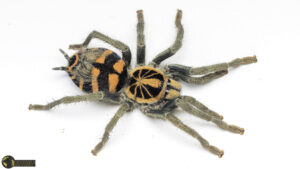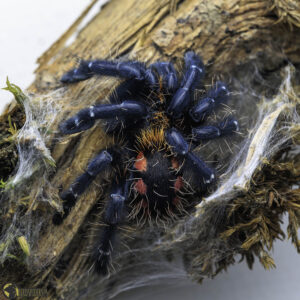Overview
Discover the fascinating Ybyrapora diversipes, an enchanting arboreal tarantula native to Bahia, Brazil. Known for its striking orange stripes on the tarsus and metatarsus, this species captivates tarantula enthusiasts worldwide. Introduced to the hobby in 2007 under the name Avicularia fasciculata, it has since been successfully bred in captivity, eliminating the need for wild-caught specimens. These beautiful spiders highlight the importance of habitat conservation and biodiversity in their native regions.
Natural History of Ybyrapora diversipes
Ybyrapora diversipes is found along the eastern coast of Brazil, particularly around the city of Ilhéus in Bahia. Their natural habitat includes former cocoa plantations where they build their homes by spinning together leaves in the vegetation, creating cozy nests. They have also been found living in bromeliad plant funnels and wandering over deadwood. These arboreal tarantulas are adapted to life in the trees, making use of the forest canopy and plant structures for shelter and hunting.
Juvenile Ybyrapora diversipes display a metallic green coloration with distinctive markings on their abdomen, including a reddish stripe down the center flanked by dark green stripes and beige “windows” on the sides. As they mature, their color shifts to a brown tone with a blue sheen on their legs and vivid orange stripes on their tarsus and metatarsus. Adult females reach about 4.5 centimeters (1.8 inches) in body length.
Taxonomy & Systematics of Ybyrapora diversipes
This species belongs to the family Theraphosidae, commonly known as tarantulas, within the subfamily Aviculariinae. Originally described by Carl Ludwig Koch in 1842 as Mygale diversipes, it was later confused with the species Avicularia fasciculata, now considered a nomen dubium (a doubtful name). The genus Ybyrapora was established to better classify these spiders, distinguishing them from closely related genera.
One key taxonomic feature of Ybyrapora diversipes is the shape of the female’s reproductive organs, specifically the strongly curved receptacula seminis that resemble the letter “M.” Males lack tibial apophyses (spurs) but can be identified by the length of their embolus, differentiating them from related species like Ybyrapora gamba and Ybyrapora sooretama.
Husbandry of Ybyrapora diversipes
Since their introduction to the tarantula hobby in 2007, Ybyrapora diversipes has been bred successfully in captivity, making wild-caught specimens unnecessary. These arboreal tarantulas thrive in terrariums that mimic their natural environment, with plenty of vertical space, live or artificial plants, and hiding spots such as cork bark or leaf nests.
- Temperature: Maintain between 24–28°C (75–82°F) to simulate their tropical climate.
- Humidity: Keep humidity levels around 70–80% to replicate the moist conditions of their native habitat.
- Substrate: Use a moisture-retentive substrate like coconut fiber or peat moss to help maintain humidity.
- Feeding: Offer a diet of appropriately sized insects such as crickets, roaches, or mealworms.
- Water: Provide a shallow water dish and mist the enclosure regularly.
Breeding in captivity has shown that females produce egg sacs containing 70 to 90 eggs after a simulated rainy season, with spiderlings hatching after about 7 to 8 weeks. This successful captive breeding supports conservation efforts by reducing pressure on wild populations.
References
- Naturhistorisches Museum der Burgergemeinde Bern: World Spider Catalog Version 15.5 – Avicularia diversipes. Retrieved September 9, 2014, from https://www.wsc.nmbe.ch/species/37195
- Martin Hüsser: A.diversipes Wissenschaftlicher Name: Avicularia diversipes. Archived September 10, 2014, from Vogelspinnenforum
- Rogério Bertani & Caroline Sayuri Fukushima (2009). Description of two new species of Avicularia Lamarck 1818 and redescription of Avicularia diversipes (C.L. Koch 1842) (Araneae, Theraphosidae, Aviculariinae)—three possibly threatened Brazilian species. Zootaxa, 2223: 25–47. PDF
